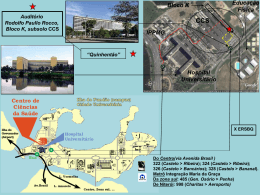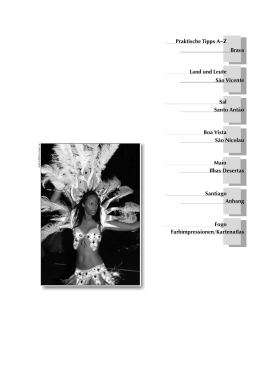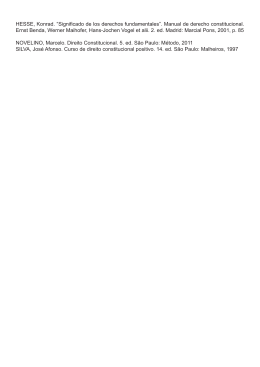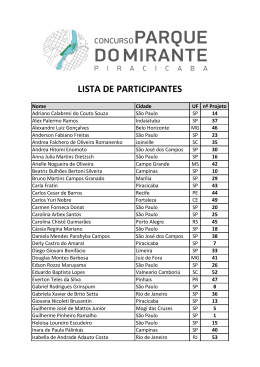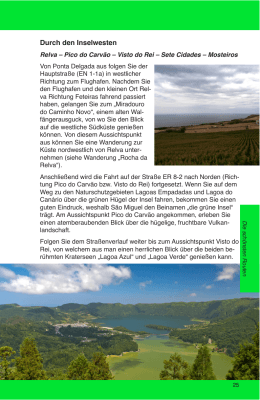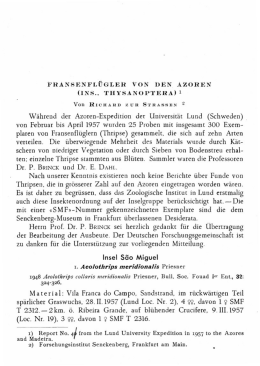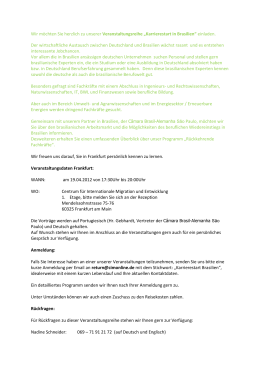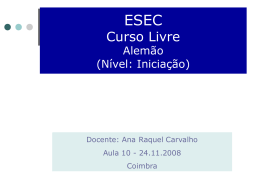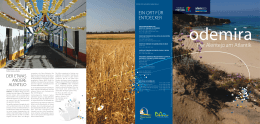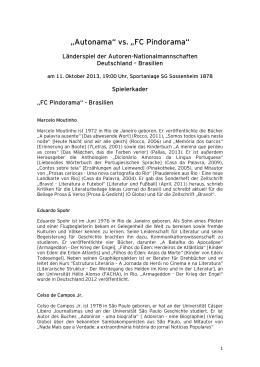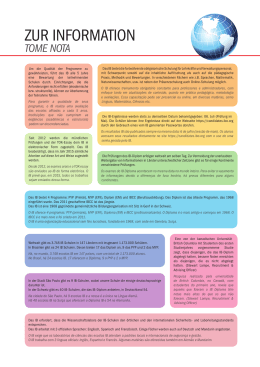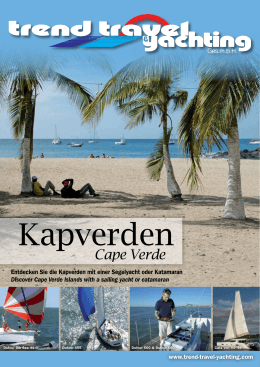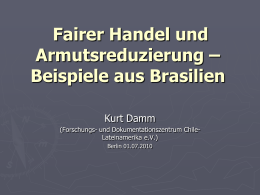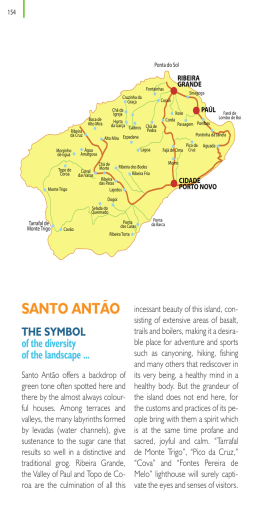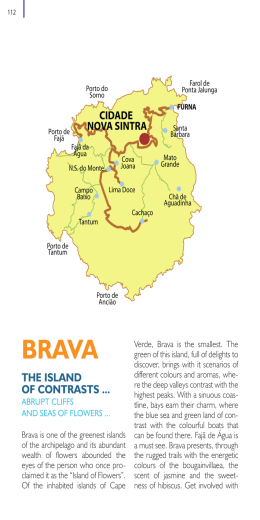142 Ribeira Funda Ribeira da Pata Praia Branca Fajã de Baixo Fajã de Cima Prainha CIDADE RIBEIRA BRAVA Cachaço Barril Cabeçalinho Caleijão Praia de Barril Fontainhas Praia da Luz Campo Praia de Francês TARRAFAL Baía do Papagaio Baixo Rocha Morro Brás Belém Morro Alto Porto da Lapa Preguiça Juncalinho Jalunga Castilhano Carriçal Baía do Forçado Baía Debaixo de Rocha SÃO NICOLAU THE ICON OF NOSTALGIA ... the land of mysteries ... Daughter of morna and sodade, land of mystery and of an impressive culture, São Nicolau, owes its name to the days of its discovery in 1461. With rugged forms and steep and rural landscapes, the magic is dispersed into the air and depicted on the faces of its people, believers in a thousand and one legends and mysteries that even today line their lives. From the colourful houses to the black colour of the rocks of São Nicolau is a stopping point for lovers of ancient practices talassotherapy, with baths of mud and sand. “Preguiça” “Ponta Larga - Juncalinho”, the ancient volcano (Juncalinho now extinct), “Ribeira Prata” and “Carberinho” constitute mandatory crossing points for those visiting the island. Ribeira Brava, Ilha de São Nicolau DAS SYMBOL DER NOSTALGIE... das land der geheimnisse.... Tochter von Morna und Sodade, Land der Geheimnisse und einer beeindruckenden Kultur, verdankt São Nicolau seinen Namen dem Tag der Entdeckung im Jahre 1461 Mit robusten Formen, steilen und ländlichen Gebieten, strahlt die Insel eine Magie aus, die sich auch in den Gesichtern seiner Bewohner zeigt, Gläubige an tausend und eine Legende und Mythen,die auch heute noch ihr Leben bestimmen. Von den bunten Häusern bis zur schwarzen Farbe der Felsen von São Nicolau ist die Insel ein Anlaufpunkt für Liebhaber von alten Praktiken der Thalassotherapie, mit Bädern aus Schlamm und Sand. “Preguiça” “Ponta Larga - Juncalinho”, dem alten Vulkan (Juncalinho – jetzt erloschen), “Ribeira Prata” und “Carberinho” bilden einige Treffpunkte für diejenigen, die die Insel besuchen. TRANSPORTATION TRANSPORT Airports Flughaefen ASA Aeroportos e Segurança Aérea Chãzinha – Ribeira Brava. Tel: 235 13 13 Airlines Companies Fluggesellschaften TACV – Cabo Verde Airlines Terreiro – Ribeira Brava. Tel: 235 11 61. Fax: 235 11 62 GETTING AROUND VERKEHRSMITTEL Public transport operates with frequency during the day between Ribeira Brava and Tarrafal (fare: 220$00), between Ribeira Brava and Juncalinho, and between Tarrafal and the North coast island. The taxi fare from Ribeira Brava to Fajã is 1,000$00, and 2,000$00 to Tarrafal. Öffentlicher Nahverkehr fährt tagsüber häufig zwischen Ribeira Brava und Tarrafal (Preis: CVE 220$00), zwischen Ribeira Brava und Juncalinho, und zwischen Tarrafal und der Nordküste der Insel. Der Taxipreis von Ribeira Brava nach Fajã beträgt CVE 1,000$00 und CVE 2,000$00 nach Tarrafal Rent-a-Car Autovermietung MONTE GORDO Ribeira Brava. Tel: 235 12 80 AGÊNCIA SANTOS E SANTOS Ribeira Brava. Tel: 235 18 30 ROTCHA SCRIBIDA Tarrafal. Tel: 236 19 02 144 Ilha de São Nicolau REVEL IN THE HISTORY and culture of a people marked by the colonization ... SCHWELGEN SIE IN DER GESCHICHTE und kultur eines dur kolonialisierung gezeichneten volkes ... The island of nostalgia, as it is sung by Cesária Evora, has its main urban center in Ribeira Brava with a markedly colonial style architecture, stamping its historical and cultural identity. As far as culture is concerned, music here is something quite different: the Mazurka, which stimulated by the rhythm of violin, is an excellent musical note to enjoy the famous dish named “Modjo”. Die Insel der Nostalgie, wie sie von Cesária Evora besungen wird, hat ihr wichtigstes städtisches Zentrum in Ribeira Brava, das mit seiner Architektur im Kolonialstil seine historische und kulturelle Identität prägt. Was die Kultur angeht, ist die Musik hier etwas ganz anderes: die Mazurka, die durch den Rhythmus der Violine angeregt eine ganz exzellente musikalische Note gibt, um das berühmte Gericht namens “Modjo” zu geniessen. HISTORY GESCHICHTE The island of São Nicolau was discovered in 1461, probably on December 6, the day consecrated to the patron Saint. Nevertheless, even though the abrupt mountains of the island safeguarded from furtive looks the fertile interior of the island with water streams favorable to the practice of agriculture and cattle breeding, the settlement of the island was postponed for one additional century. In 1683, a British sailor reported that only 100 families lived in the island, and described with surprise the green vineyards and the abundance of wood inland. On the other hand, the easy exposition of the island of São Nicloau to the sacks of the pirates was the main reason why settlement by new colonizers became safer only after the construction of the Fort de São Jorge (in1818), in the small village of Preguiça. In 1866, Júlio José Dias, the son of a rich farmer, and a famous medical doctor and benefactor, donated his mansion in Ribeira Brava to start the Seminary of Cape Verde. The School annexed to the Seminary taught courses of quality and academic curricula similar to those of the Portuguese universities, and gave its students a possibility to be recruited in the civil and religious administration of the colonial empire. From then on, the most brilliant minds of the archipelago went to São Nicolau, and Cape Verde became the centre for the irradiation of Portuguese evangelization in West Africa. The island of de São Nicolau became the centre of intellectual production of the country for the next 60 years, until the definite closing of the Seminary, in 1917. In addition, in 1936 it became the birth place of the important literary movement ‘Claridade’, or Clarity, that was headed by Capeverdean poets and writers such as Baltazar Lopes, Manuel Lopes, João Lopes and Jorge Barbosa. Today, São Nicolau has a population of 20,000 inhabitants, most of it leaves in the fishing village of Tarrafal. Die Insel São Nicolau wurde 1461 entdeckt, wahrscheinlich am 6. Dezember gewidmet dem Namenspatron. Dennoch, obwohl die steilen Berge die Insel vor verstohlenen Blicken ins Innere der Insel mit Wasserläufen, die sich für Landwirtschaft und Viehzucht eignen, schützen, wurde die Besiedlung der Insel für ein weiteres Jahrhundert verschoben. Im Jahre 1683 berichtete ein britischer Seemann, dass nur 100 Familien auf der Insel lebten, und beschrieb überrascht die grünen Weinberge und die Fülle von Holz im Inland. Auf der anderen Seite war die offene und gegen Piraten ungeschützte Lage der Hauptgrund, warum die Besiedlung durch die neuen Kolonialisten erst nach dem Bau des Fort São Jorge (im Jahre 1818), in dem kleinen Dorf Preguiça sicherer wurde. Im Jahre 1866 stiftete Júlio José Dias, der Sohn eines reichen Farmers und berühmter Arzt und Wohltäter, sein Anwesen in Ribeira Brava, um dort das erste Seminar von Kap Verde einzurichten. Die dem Seminar angeschlossene Schule erteilte einen mit portugiesischen Uni- 146 versitäten qualitativ vergleichbaren Abschluss und akademischen Grad, und gab damit seinen Studenten die Möglichkeit, in der bürgerlichen und religiösen Verwaltung des Kolonialreiches eingestellt zu werden. Von da an zogen die brillantesten Köpfe des Archipels nach São Nicolau, und Kap Verde wurde für die folgenden 60 Jahre ein intellektuelles Zentrum des Landes für West Afrika, bis das Seminar 1917 geschlossen wurde. Darüber hinaus wurde dort im Jahre 1936 die literarische Bewegung ‘Claridade’, oder Clarityins ins Leben gerufen, die von den kapverdischen Poeten und Schriftstellern wie, Baltazar Lopes, Manuel Lopes, João Lopes und Jorge Barbosa geleitet wurde. Heutzutage hat São Nicolau ca. 20.0000 Einwohner, die meisten davon im Fischerdorf Tarrafal. WHERE TO STAY UNTERKÜNFTE There are boarding houses available in Ribeira Brava and Tarrafal. A Hotel with more than 200 rooms is being built in Tarrafal. You may also rent rooms in the other villages. During the high season we recommend you to book rooms with advance. Suggestions: Pensionen gibt es in Ribeira Brava und Tarrafal. Ein Hotel mit mehr als 200 Zimmern wird in Tarrafal gebaut. In anderen Dörfern Können sie ebenfalls Zimmer mieten, während der Saison empfehlen wir Ihnen ein Zimmer im Voraus zu buchen. Vorschläge: AFRIKITESURF – GUESTHOUSE Tarrafal. Tel: 2361944 ALDEAMENTO TURÍSTICO MONTE GORDO Tarrafal. Tel: 235 12 80 AQUÁRIO Tarrafal. Tel: 236 10 99 EDIFÍCIO MAGICO APARTHOTEL Tarrafal. Tel: 236 19 41 JUMBO RESIDENCIAL Ribeira Brava. Tel: 235 13 15. PENSÃO BELA SOMBRA Ribeira Brava. Tel/Fax: 235 18 30. E-mail: [email protected] PENSÃO DA CRUZ Ribeira Brava. Tel: 235 12 82. Caixa Postal n.36 PENSÃO RESIDENCIAL JARDIM CP 39, Ribeira Brava. Tel: 235 11 17. Fax: 235 19 49. PENSÃO SANTO ANTÓNIO Ribeira Brava. Tel: 235 22 00. Mov: 993 42 84. Fax: 235 21 99. RESIDENCIAL ALICE DE LIDIO GOMES- CASA DO PASTO Tarrafal. Tel: 236 11 87. Fax : 236 16 93. RESIDENCIAL NATUR Tarrafal. Tel: 236 11 78. RESIDENCIAL TOCELY CP. 7, Tarrafal. Tel: 236 12 20. WHERE TO EAT RESTAURANTS The gastronomic specialty of the island of São Nicolau is modje – a stew made with meat o castrated ram (goat) potatoes, onions, cereals and garnished with rice. Fish and shellfish such as lobster are also the base of the diet of the island. Grogue of São Nicolau is just as much Monte Gordo, Ilha de São Nicolau 148 appreciated as the grogue of Santo Antão, and the canned tuna fish is also very popular for its great quality. Typical food is also served in bars located in Ribeira Brava, Tarrafal and Preguiça. Die gastronomische Spezialität der Insel São Nicolau ist modje – ein Eintopf mit Fleisch oder Ziege, Kartoffeln, Zwiebeln, Getreide und garniert mit Reis. Fisch und Schalentiere wie Hummer sind ebenfalls Ernährungsgrundlage auf der Insel. Grogue aus São Nicolau wird genauso geschätzt wie der Grogue aus Santo Antão, und der Dosenthunfisch ist aufgrund seiner hohen Qualität ebenfalls beliebt. Landestypisches Essen wird ebenfalls in einigen Bars in Ribeira Brava, Tarrafal und Preguiça serviert. BAR RESTAURANTE PATCHÉ Tarrafal. Tel: 236 14 01. Fax: 236 13 01 GOLFINHO Tarrafal. Tel: 236 15 88 Mov: 994 27 36. Restaurante Bar BELA SOMBRA DALILA Ribeira Brava. Restaurante Bar FELICIDADE Vila Tarrafal. Tel: 236 11 58 SILÀ Pensão - Bar – Ristorante Tarrafal. Tel: 235 11 88 PARTIS REGIONAUX COMMUNITY Estância Baixo e Caleijão Preguiça Praia Branca e Carvoeiros Ribeira Brava e Campinho Praia da Prainha Pedro Praia da Telha Ribeira Prata Ribeira Brava Tarrafal ber Ribeira Brava FEAST Pascoela Santo António São João São Pedro São Pedrinho DATE April 13rd of June 24th of June 29th of June 1st Sunday after São Music festivals Potable Water Festival N. Sra. do Rosário São Francisco August September 1st Sunday of October 1st Sunday of Decem- Municipality Day 6th of December DARE TO CLIMB THE PEAK OF MONTE GORDO… WAGEN SIE ES AUF DEN VON MONTE GORDO ZU KLETTERN ... GIPFEL To venture from “Ribeira da Prata” (in the Municipality of Tarrafal de São Nicolau) to the Natural Park of Monte Gordo, at 1,312 meters of altitude, is undoubtedly a memorable tour of beauty, through the eucalypt plantations and the coniferous that mark the trails. The panoramic views from this hill shall not to be missed, either of the sea that separates and unites the Creole traditions, or to some islands north of the archipelago, only visible on a clear day. Sich von “Ribeira da Prata” (in der Gemeinde von Tarrafal de São Nicolau) in den Naturpark von Monte Gordo in 1312 Metern Höhe vorzuwagen, ist zweifellos eine unvergessliche Tour der Schönheit durch Eukalyptus Pflanzungen und Nadelwälder, die den Weg markieren. Den Ausblick von diesem Berg dürfen sie nicht verpassen, weder den Blick auf das Meer das die kreolische Tradition trennt und eint, noch auf die nördlichen Inseln des Archipels, die nur an klaren Tagen sichtbar sind. WHERE TO GO SEHENSWERT Natural Tourist Attractions Touristische Sehenswuerigkeiten (Natur) NATURAL PARK OF MONTE GORDO NATURPARK MONTE GORDO Monte Gordo est un massif montagneux situé à l’Ouest de l’île de São Nicolau, il constitue l’ancien périmètre forestier d’État, les zones arborés, grandes rivières et quelques escarpes où la présence des plantes endémiques est importante. La zone contient un nombre important de plantes endémiques de l’île de São Nicolau (32) 26 desquelles sont dans la liste rouge de Cap-Vert. 150 Monte Gordo ist ein Berg an der Westseite der Insel São Nicolau, und er wird begrenzt durch den ehemaligen Staatsforst mit Federbuschbewachsung, grossen Tälern und einigen Klippen, wo es viele endemische Pflanzen- und Vogelarten gibt. Das Gebiet hat eine grosse Anzahl der auf São Nicolau vorkommenden Arten endemischer Pflanzen, (32), von denen 26 auf der kapverdischen roten Liste stehen. RIBEIRA BRAVA It’s a very attractive village, with typical colonial like houses, coulorfully painted with flowerly gardens. It’s encrusted like a wedge between the steep slope of a stream of water and a paved street that follows it from the square knows as Praça Cónego Dias, where you’ll find the bust of Dr. Júlio José Dias, and the Parish Church of Nossa Senhora do Rosário, built in the beginning of the 18th Century, at the time of the establishment of the village. Es ist ein sehr attraktives Dorf mit typischen Häusern im Kolonialstil, bunt angestrichen mit blühenden Gärten. Es liegt eingebettet zwischen einem Tal und einer gepflasterten Strasse, die zu dem Platz Cónego Dias führt, wo sich die Büste von Dr. Júlio José Dias und die Pfarrkirche Nossa Senhora do Rosário befindet, die zu Beginn des 18. Jahrhunderts zum Zeitpunkt der Gründung des Dorfes gebaut wurde. Cultural Tourist Attractions Kulturelle Sehenswuerdigkeiten SEMINARY-HIGH SCHOOL SEMINAR GYMNASIUM The first Seminary of Cape Verde. Ancient house of the benefactor Dr. Júlio José Dias who, in 1866, donated it for the establishment of the Seminary and the High School. Famous personalities from Cape Verde’s political and cultural life attend that School. Das erste Seminar von Kap Verde. Das Haus des Stifters Dr. Júlio José Dias, der es im Jahr 1866 für den Aufbau eines Seminars und Gymnasiums stiftete. Berühmte Persönlichkeiten aus Kapverdes politischem und kulturellem Leben besuchten diese Schule. MIRADOURO EM CACHAÇO BEOBACHTUNGSPUNKT IN CACHAÇO located in the so called ‘Caminho Novo’ (New road), with a view of the valley of Ribeira Brava and of the village as well. Befindet sich an der so genannten ‘Caminho Novo’ (neue Strasse), mit Blick über das Tal von Ribeira Brava und des Dorfes. FORTRESS FESTUNG Built in the Bay of São Jorge, in the beginning of the 19th Century in order to face the frequent attacks of the pirates that would invade the island. Make sure you visit the fishing village Preguiça where fishermen dive to catch lobsters. In der Bucht von São Jorge, Anfang des 19. Jahrhunderts zum Schutz gegen die häufigen Piratenangriffe die die Insel erobern wollten. Besuchen sie das Fischerdorf Preguiça, wo die Fischer tauchen um die Langusten zu fangen. Tourist Events Wichtige Ereignisse CARNIVAL OF RIBEIRA BRAVA WICHTIGE EREIGNISSE An important event for the island of São Nicolau that lasts 3 days. It is also a social and cultural tradition. Weeks before the parade of carnival groups from Ribeira Brava village and from the surrounding villages work hard for the parade. Then these carnival groups carnival parade during those days and nights. Eine wichtige, 3 Tage dauernde Veranstaltung. Es ist gleichzeitig eine traditionelle und kulturelle Veranstaltung. Wochen vorher ziehen die Karnevalsgruppen durch das Ribeira Brava und die umliegenden Orte. Eine Vorbereitung fuer die spaetere Parade und die unglaublichen Tage und Naechte der Feiern. Explore over 100 species of dragon trees in the rugged landscapes ... Typical of the Macaronesia region to which Cape Verde belongs, the dragon trees are ancient and rare trees classified as a species threatened by extinction. There are over one hundred specimens of this type of tree, completing a scenario of unparalleled beauty and exuberance. 152 Entdecken Sie über 100 Arten von Drachenbäumen in der zerklüfteten Landschaft Typisch für Makronesien, wozu auch Kap Verde gehört, sind die Drachenbäume. Drachenbäume sind eine alte und seltene Art und werden als vom Aussterben bedroht eingestuft. Es gibt dort mehr als hundert Exemplare dieser Baumart, die das Bild von beispielloser Schönheit und Fülle vervollständigen.. ITINERARIES TOUREN Walking up Monte Gordo, the highest peak of São Nicolau and a natural park, is a must, and it shall be done from Cachaço, a village near Fajã. The view from there is breathtaking, deep and immense valleys alternated with huge and scarped mountains that inspire respect. On bright days, you’ll glimpse at the islets Raso e Branco, on the West, and at the islands of Santa Luzia, São Vicente and even Santo Antão. Tarrafal is located on the west south coast Tarrafal, a village with an intense fishing activity, Make sue you visit the black sandy beaches, very rich in iodine and titanium, recommended for therapy for arthritis and rheumatics. The sea is full of fish. A little bit to the South, you’ll find the best beach of the island – Praia de Baixo Rocha. Suggestions for some routes: • Ribeira Brava, Cachação, Cabeçalinha, Calejão - 10 km road Itinerário that takes at least 4 hours to be crossed. • Cachação, Monte Gordo - 5 km road that takes 2 hours to be crossed. • Fajã de Baixo, Fragata, Ribeira da Prata – 6 km road that takes 3 hours to be crossed. Zum Monte Gordo, dem höchsten Gipfel von São Nicolau und dem Naturpark zu laufen ist ein Muss. Und Sie sollten von Cachaço, einem Dorf nah bei Fajã starten. Die Aussicht von dort ist atemberaubend, tiefe, riesige Täler wechseln sich mit grossen, steilen und respekteinflössenden Bergen ab. An klaren Tagen sehen Sie die Inselchen Raso und Branco im Westen und die Inseln Santa Luzia, São Vicente und sogar Santo Antão. Tarrafal liegt an der Westküste und ist ein Dorf, wo intensiver Fischfang betrieben wird. Besuchen sie auf jeden Fall die schwarzsandigen Strände, die reich sind an Jod und Titan und für eine Therapie gegen Rheuma und Arthritis empfohlen werden. Das Meer ist sehr fischreich. Etwas im Süden finden Sie den besten Strand der Insel – Praia de Baixo Rocha. Vorschläge für einige Routen: • Ribeira Brava, Cachação, Cabeçalinha, Calejão - 10 km Strecke, Dauer der Wanderung mindestens 4 Stunden. • Cachação, Monte Gordo - 5 km lange Strecke, Dauer mindestens 2 Stunden. • Fajã de Baixo, Fragata, Ribeira da Prata – 6 km Strecke , Dauer ca 3 Stunden POSTO SANITÁRIO DO TARRAFAL Tarrafal. Tel: 236 11 30 SHOPPING EINKAUFEN DELEGACIA DE SAÚDE DA VILA DAS POMBAS Vila Pombas. Tel: 223 11 30 There are shops selling typical handicraft of the island or of Cape Verde in general, in Ribeira Brava and in Tarrafal. POSTO SANITÁRIO DE FAJÃ Fajã Baixo. Tel: 237 14 25 Es gibt Geschäfte in Ribeira Brava und Tarrafal, die typisches Kunsthandwerk der Insel oder auch von Kap Verde allgemein verkaufen. SUPPORT SERVICES HEALTH GESUNDHEIT CVTELECOM, SA Support Service to customer. Tel: 800 10 10 Hospitals and Health centers HOSPITAL DA RIBEIRA BRAVA SÃO JOÃO Ribeira Brava. Tel: 235 11 30 / 235 18 94 Fax: 235 18 94 Telecommunications Telecommunikation CVMÓVEL Support Service to customer. Tel: 180 CYBER HEBRAICO Vila Ribeira Brava. Tel: 235 23 17 Vila Tarrafal. Tel: 236 18 34
Download
